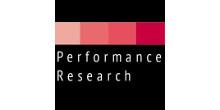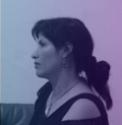NEW CfP: On Audacity (31.1)

NEW Open Call for Papers
Vol. 31, No. 1: On Audacity
Issue Editors: Jenny Lawson, Adele Mason-Bertrand and Jacki Willson
Proposal Deadline: Monday 17 March 2025
''Audacity is used by both those swimming with and those swimming against the tide of norms … [A]udacity is a public challenge to conventions characterised by boldness and a disregard for decorum, protocol, or moral restraints. As such, it is not necessarily understood negatively. Instead, audacity can be orientated towards the future by enacting a step away from the line and the mass of others. To be audacious is to declare that one is striking out with daring, in a different direction.'' (Cooke 2020: 1–2)
This summary of audacity by Jennifer Cooke in her investigation of the ‘new audacity’ in contemporary feminist life-writing captures the ambivalence and complexity of the term. In theatrical contexts we understand performances labelled as audacious to be ground-breaking, important works that seek to push the boundaries of form, unsettle the status quo and provoke new thought and ideas. Theatrical manifestations of audacity have roots in political theatre, guerrilla theatre, performance art, comedy, drag, burlesque, trans, non-binary and gender-queer performance. This issue of Performance Research seeks to further understand and to expand the potential of audacity as a mode of transgression in and as performance.
Focusing on the body; behaviour; feminist politics; and theatricality, we ask: how does audacity manifest in theatre and performance, and to what end? What does it mean to live audaciously? How can audacious modes of being and performing assist with the pursuit of the non-normative and help dismantle structures of power? And what kind of work enables these theatrical techniques and interventions? Is it a global phenomenon or is it limited to English-speaking/global minority theatrical cultures and production?
In addition to an attitude or affect, there is a question of legibility or being spectated as outside of, or resisting the norm that goes alongside a label of ‘audacity’. Sara Ahmed recognizes the role of audacity in the practice of being and operating as a wilful subject (2014: 134). To be wilful and audacious is to be a problem, to refuse to accept authority as it is prescribed. This kind of challenge to authority has origins in feminist practice and performance art. In that lineage of revolt, artists have employed the grotesque and excess to resist patriarchal regulation of unruly, uncontained and unfettered bodies. But we would like to ask what different affordances audacity offers performers, makers and spectators as a performative strategy for challenging white heteropatriarchal norms.
Audacity’s daring mode of address – whether that be irony, humour, a smile and a wink, flamboyance or a cheeky disregard of theatrical rules and social mores – acts as an intervention into power dynamics. It refuses to be controlled, hemmed in or directed by expectations. This is a theatrical mode that reconstitutes the gaze, reclaims space and refuses to feel shame or ‘toe the line’. In fact, audacity cheekily steps over the line without asking for permission. Therefore, rather than refusing to physically and viscerally take the shape of heterosexist desire – as in the grotesque and excess (Hernandez 2020; Kokoli 2016; Russo 1994) – audacity could be understood as a daring riposte and defiance that refuses to be shaped, positioned or limited by heteronormative power structures. Could audacity be understood as a provocative, joyful, even outrageous way of calling in other ways of shaping and building community and social relationality?
Audacity has been a necessary tactic and mode of survival for feminists, trans, racialized, disabled and other marginalized people. Black feminists and feminists of colour in Alice Walker’s notion of the ‘womanist’ were ‘outrageous, audacious, courageous’ (1984: xi), and revolutionary poet and writer Audre Lorde had the audacity to be Black, feminist and queer. More recently, performance artist, writer and poet Travis Alabanza has revealed in their work the consequences of having the audacity to refuse gender binaries, and Black trans cultural critic and self-confessed dreamer Cody Charles has urged their communities to ‘show up’ and ‘move in audacity’ (Charles 2022). Audacity, then, asserts itself as a form of collective action and resistance rooted in the Black feminist tradition and Abolitionist movement of dismantling oppressive structures of race, gender, violence and power. Scholars such as Davis et al. (2022), Bey (2022) and Olufemi (2021) boldly refuse structures of power and call for an imagining otherwise. In these writings, audacity is tacitly invoked as a radical project of the future. In allyship with that mode of being that gives power to marginalized and outsider perspectives, this issue asks what performance can bring to that radical project.
Although we embrace the positive potential of audacity, we also tread with caution and recognize the need to consider the way audacity upholds normative regimes, and ask when does audacity slip into arrogance? Whereas rule breaking has been celebrated in the academy and in arts practice, the contemporary political climate has revealed the real risk to life when people in power shirk the rules, ignore policy and even break the laws they themselves have set. The performance of audacity includes peacocking behaviours that are pompous, narcissistic, embarrassing and even dangerous. How can radical performances of audacity be mindful of, respond to or coexist with, these pitfalls?
We welcome a consideration of audacity as both form and affect. When the performer is potentially preaching to the converted as a ‘knowing’ audience, has ‘audacity’ become overfamiliar and expected as a device in theatre and performance and therefore become a less effective pastiche of itself? We recognize a need to consider the ethical repercussions of such dramaturgical devices that may be uninvited, and even invasive, and ask if there should be a limit to what audacity does? Who polices the limits and where is the accountability? These are questions that we also need to ask ourselves as editors, as we recognize our positionality as middle-class, cisgendered scholars, and the different intersectional privileges we hold as two white British women and one mixed heritage, white British and Black Caribbean woman.
We invite proposals for articles, manifestos, provocations and artist pages that challenge or extend these ideas of audacity. Potential topics include but are not limited to:
Audacity as resistance and/or refusal
The ethics and efficacy of audacity
Audacity as a global phenomenon
Audacity and the non-normative
Audacity in trans, gender non-binary and queer performance
Black feminist critiques of appropriation of audacity
Audacious fashion, dress, subcultures
Audacity in burlesque, drag and cabaret performance
Audacity feminism and feminist practice
Audacity and autobiographical/confessional modes of performance
Audacious bodies in performance art/live art
Audaciousness and the grotesque
Audacity and occupying/taking-up space
Audacity and fatness/fat studies/critical perspectives on body positivity
Audacity in political performance and activism
Performing and living audaciously
Performances and representations of pomp, arrogance, conceit, and power crazed
Audacity and performances of fantasy, fiction and imagined futures
Please submit abstracts of 500 words and a 100-word author biography for articles of approximately 5,000–7,000 words and shorter contributions and artist pages, as per the guidelines below:
Issue-related enquiries should be directed to the issue editors via: j.a.lawson@leeds.ac.uk ; a.mason-bertrand@leeds.ac.uk and j.m.willson@leeds.ac.uk
General Guidelines for Submissions:
• Before submitting a proposal, we encourage you to visit our website – www.performance-research.org – and familiarize yourself with the journal.
• Proposals should be created in Word – this can be standard Microsoft Word .doc or .docx via alternative word processing packages. Proposals should not be sent as PDFs unless they contain complex designs re artist pages.
The text for proposals should not exceed one page, circa 500 words.
• A short 100-word author bio should be included at the end of the proposal text.
• Submission of images and other visual material is welcome provided that there is a maximum of five images. If practical, images should be included on additional pages within the Word document.
• Proposals should be sent by email to info@performance-research.org
• Please include your surname in the file name of the document you send.
• Please include the issue title and number in the subject line of your email.
• Submission of a proposal will be taken to imply that it presents original, unpublished work not under consideration for publication elsewhere.
• If your proposal is accepted, you will be invited to submit an article in first draft by the deadline indicated above. On final acceptance of a completed article, you will be asked to sign an author agreement in order for your work to be published in Performance Research.


